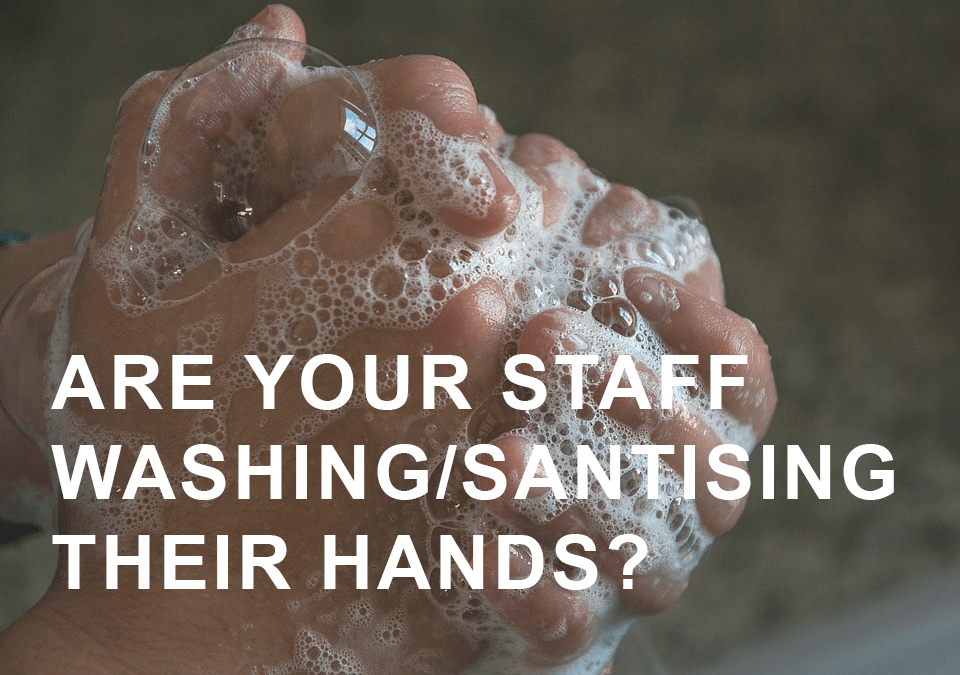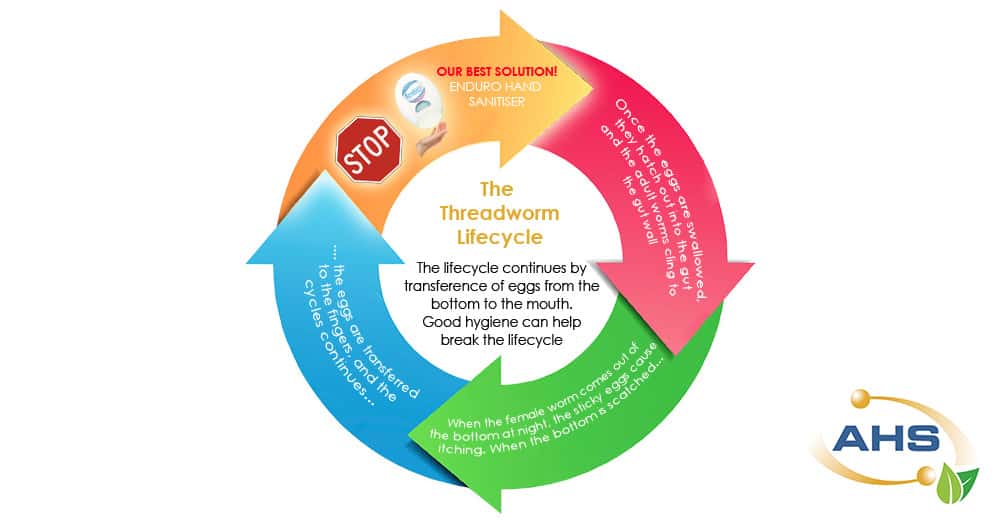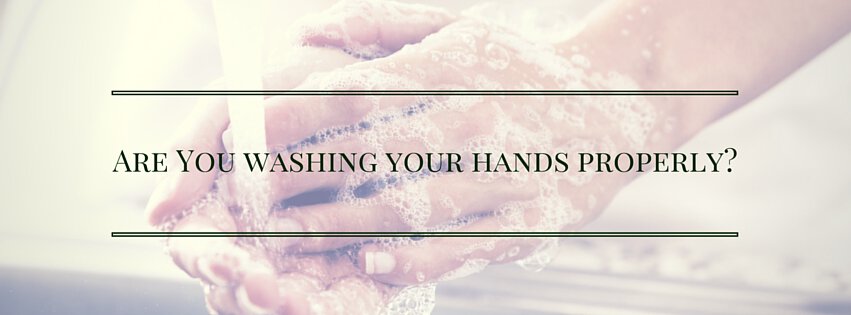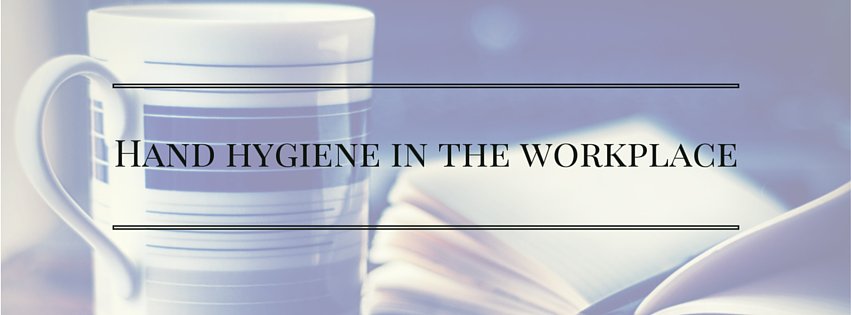
by LBrownless@absolutehygienesolutions.com | Mar 20, 2018 | Hand Hygiene, Uncategorized
Staff absenteeism could be disrupting the efficiency of your workforce. Each member of staff in your company plays a unique and key role. Illnesses such as coughs and colds, accounted for approximately 6.3 Million days lost in the year of 2016. Respondents in the CIPD (Chartered Institute of Personnel and Development) Absentee Management Survey of 2016, reported that nearly three quarters of organisations involved, experienced staff presentism (When staff are ill at work). We have between 2-10 million bacteria between our fingertips and elbows, this can double after using the toilets. Most infections are caused by naturally occurring harmful bacteria and viruses being passed by hand contact. There is an inexpensive and effective way to prevent the spread of germs in your workplace. Hand washing is the single most effective step in breaking this chain of cross contamination and preventing the transmission of foodborne illness, colds and infection in the workplace; ensuring compliance with legislation. After washing your hands and also for visibly clean hands, AHS recommends protecting your hands with Enduro, our alcohol free, moisturising hand santiser that continues to work 2 hours after application: Absolute Hygiene Hand Care...

by LBrownless@absolutehygienesolutions.com | Oct 17, 2017 | Hand Hygiene
September is the start of the academic year and is arguably one of the busiest times of the year for parents and children returning to Nursery and School. Making sure your child’s hands are washed could prove to be a challenging experience. This year has seen a rise in cases of Threadworm infections reported in nurseries around the country. Threadworms, also known as pinworms, are tiny parasitic worms that infect the large intestine of humans. Threadworms are a common type of worm infection in the UK, particularly prevelent in children under the age of 10. Worms appear white in stools and look strikingly similar to small peices of thread. It is also possible to notice them around your child’s bottom. In some cases, Threadworms do not cause symptoms, however, people have reported itchiness around the bottom or vagina. Itchiness often worsens during nittght time which can be a clear indication of infection. There are many ways in which a Threadworm infection can spread. Thankfully we have a range of products available that can minimize and eliminate infection. Educate yourself by reading our explainer graphic below: Prevention Preventing a Threadworm infection can be a challenging experience. However, maintaining good hygiene and making sure your children’s hands are washed regularly can help to prevent the infection from spreading. Our Enduro Hand Sanitiser can help ∂vvtto keep both you and your children’s hands clean in between washes and meals. Enduro Hand Sanitiser is tested and proven to be sporadically active against C. difficile. Its pleasant foam formulation is kind to skin and preserves natural skin oils rather than stripping them like...

by LBrownless@absolutehygienesolutions.com | May 6, 2016 | Hand Hygiene
There seems to be so much information out there that you may find yourself wondering how you wash your hands properly. Glasgow Caledonian University researched into hand washing techniques in the healthcare industry and found that the six step method recommended by World Health Organisation is more superior to the standard method of rubbing your hands together for 20 seconds or so, followed by a rinse. Glasgow Caledonian University found this six step method was micro-biologically more effective for reducing the bacterial count (from 3.28 to 2.58) compared to the standard method. Healthcare professionals have to be more vigilant when washing their hands but we’ve made our own fun AHS poster that will help to promote excellent hand hygiene, no matter where you work. One way to think about it is you should wash your hands thoroughly for as long as it takes to sing Happy Birthday twice. Wet hands and apply soap or hand sanitiser. Rub palms together until soap is bubbly Rub each palm over the back of the other hand Then rub between your fingers on each hand Rub the backs of your fingers against the opposite palm while interlocking your fingers Clasp your left thumb in your right palm and rub in a rotational motion, then switch hands and carry out the same step. Carry out rotational rubbing backwards and forwards while clasping the fingers of your right hand in the palm of your left and vice versa Click here to view our Clean Crew...

by LBrownless@absolutehygienesolutions.com | May 5, 2016 | Hand Hygiene
Here at AHS we work closely with the Healthcare industry from care homes to private and NHS hospitals and that is why we are supporting the World Health Organisation’s campaign, SAVE LIVES: Clean Your Hands. Washing your hands is the simplest way to prevent and control infections, which is incredibly important in the healthcare industry. However it is the lack of compliance among healthcare providers which causes problems worldwide. Just recently, shocking statistics were released that revealed a large majority of healthcare workers in outpatient care, did not wash their hands efficiently and in some cases, not at all. This campaign is working to improve hand hygiene globally, in surgical wards to operating theatres to outpatient surgical services to reduce HCAI (Health Care Associated Illness) and the burden on health systems. Hospital patients are more at risk of developing infections, especially if they have scars or wounds. Each time a healthcare worker touches a patient, microorganisms are transferred. These little micro-organisms have strong standing power as they can survive on hands for anything between 2 minutes to an hour. In the absence of hand hygiene action there is a greater degree of hand contamination. The possible implications of not washing your hands are huge – infections lead to more serious illnesses, prolonged hospital stays, financial costs and in the worst case, tragic loss. The good news is most health-care associated infections are preventable through hand hygiene – cleaning hands at the right time and in the right way. You can visit World Health Organisation’s website to find out lots more about hand hygiene and we have a few articles...

by LBrownless@absolutehygienesolutions.com | May 4, 2016 | Hand Hygiene
We all know you should be washing your hands but are you aware of just how good it is at infection control? It’s so important, wherever you are, that you make sure you wash your hands after every toilet visit, before and after preparing food, after a cough or sneeze and when dealing with patients. Why should you wash your hands? First of all, it is the easiest way to prevent sickness in the workplace. A typical worker in an office comes in to contact with 10 MILLION germs A DAY. Toilets, and in particular, faeces, are a big source of germs, such as Salmonella and Norovirus which can give you diarrhoea. In fact you’re 31% more likely to get diarrhoea if you do not wash your hands. A single gram of human faeces—which is about the weight of a paper clip—can contain one trillion germs. These germs can get onto people’s hands and if they are not washed off can be passed from person to person and could make you sick. Bacteria can spread very quickly- in just 8 hours one bacterium could have multiplied by 17 million. Handwashing properly reduces the amount of bacteria on your hands and the chances of it spreading further. But, did you know that 1 in 10 people do not wash their hands? Say you work in an office of ten people: you probably think one person isn’t that bad. But imagine this, that one person could be the colleague opposite you who has just gone to toilet. On his or her way back to the desk, he/she has offered to do...






